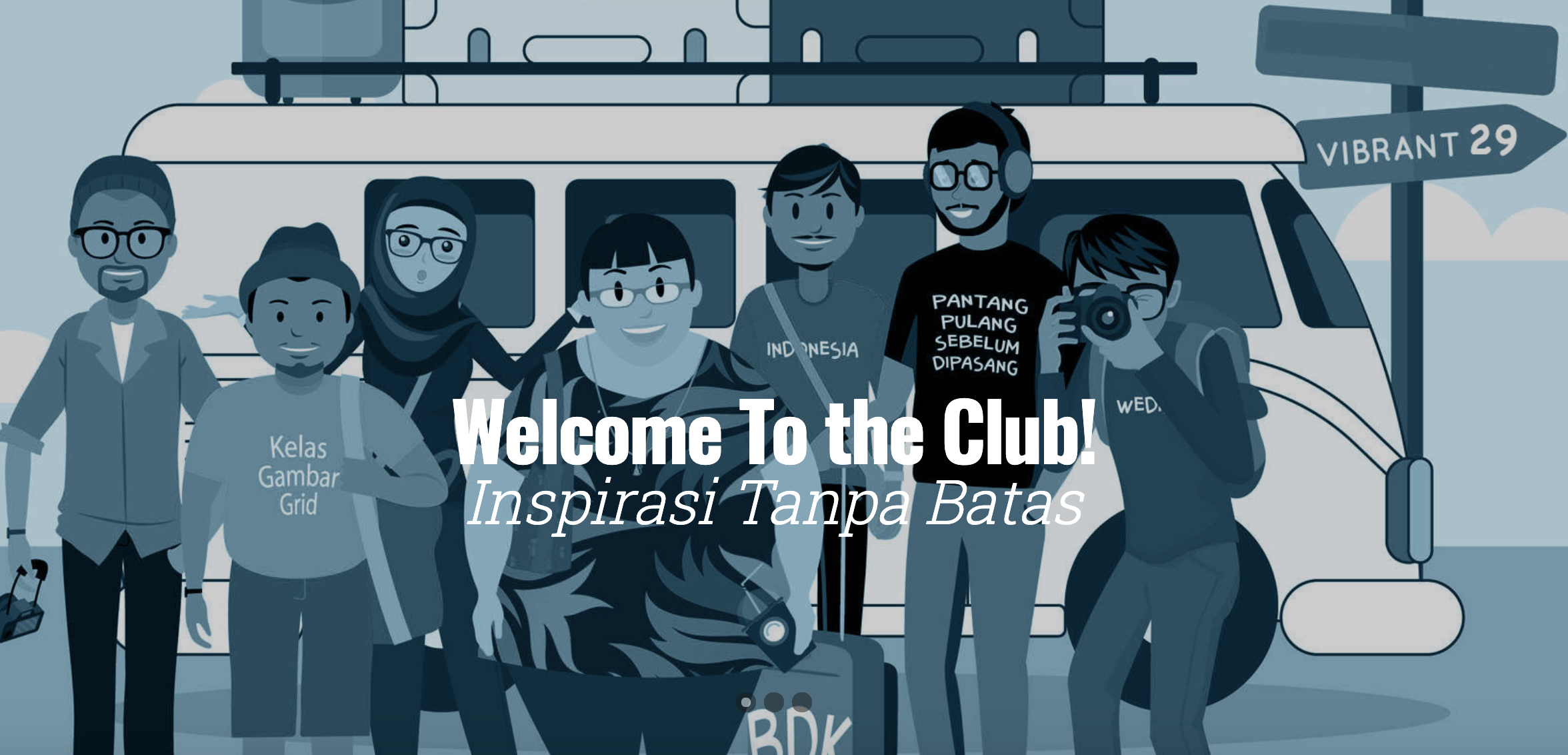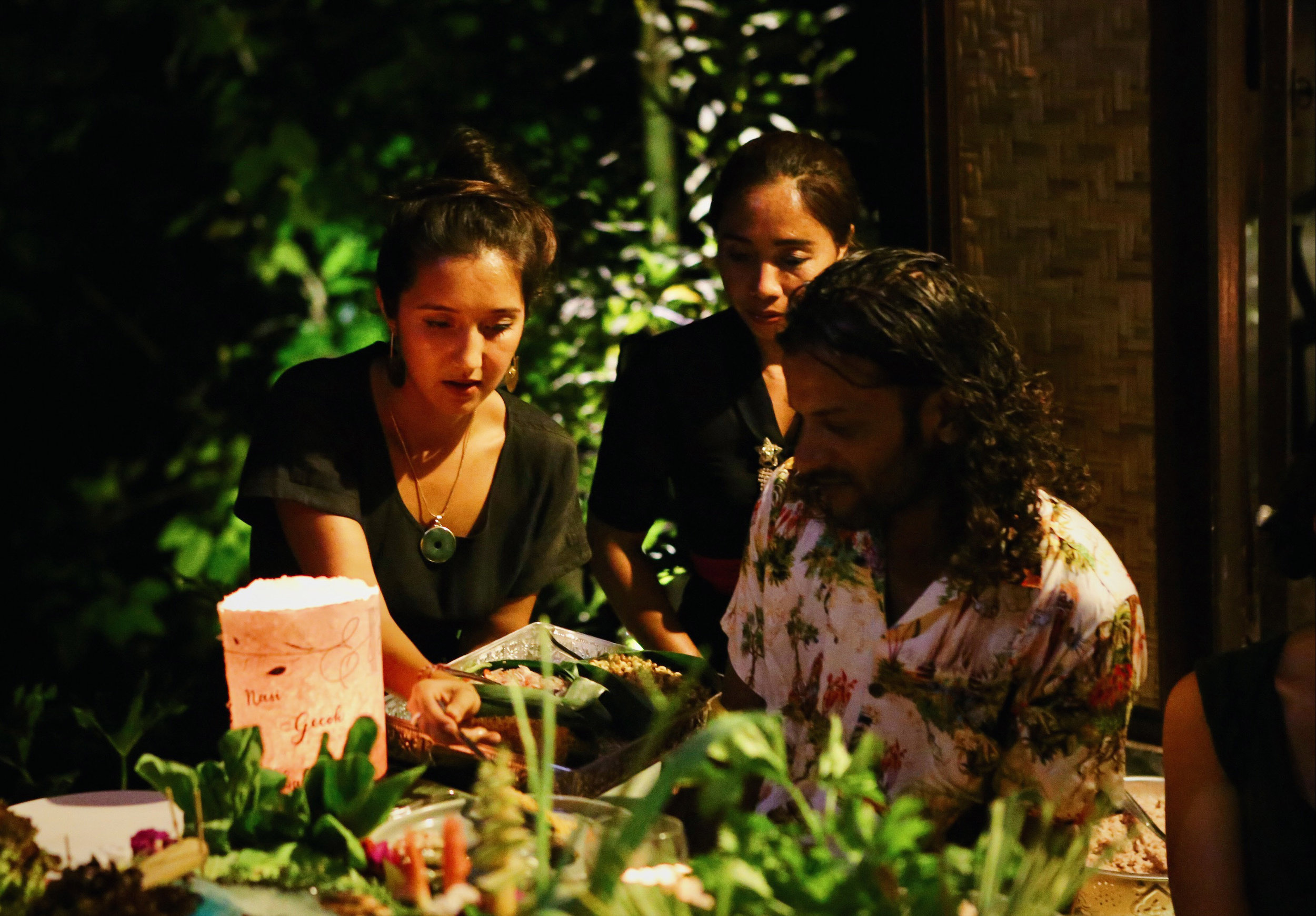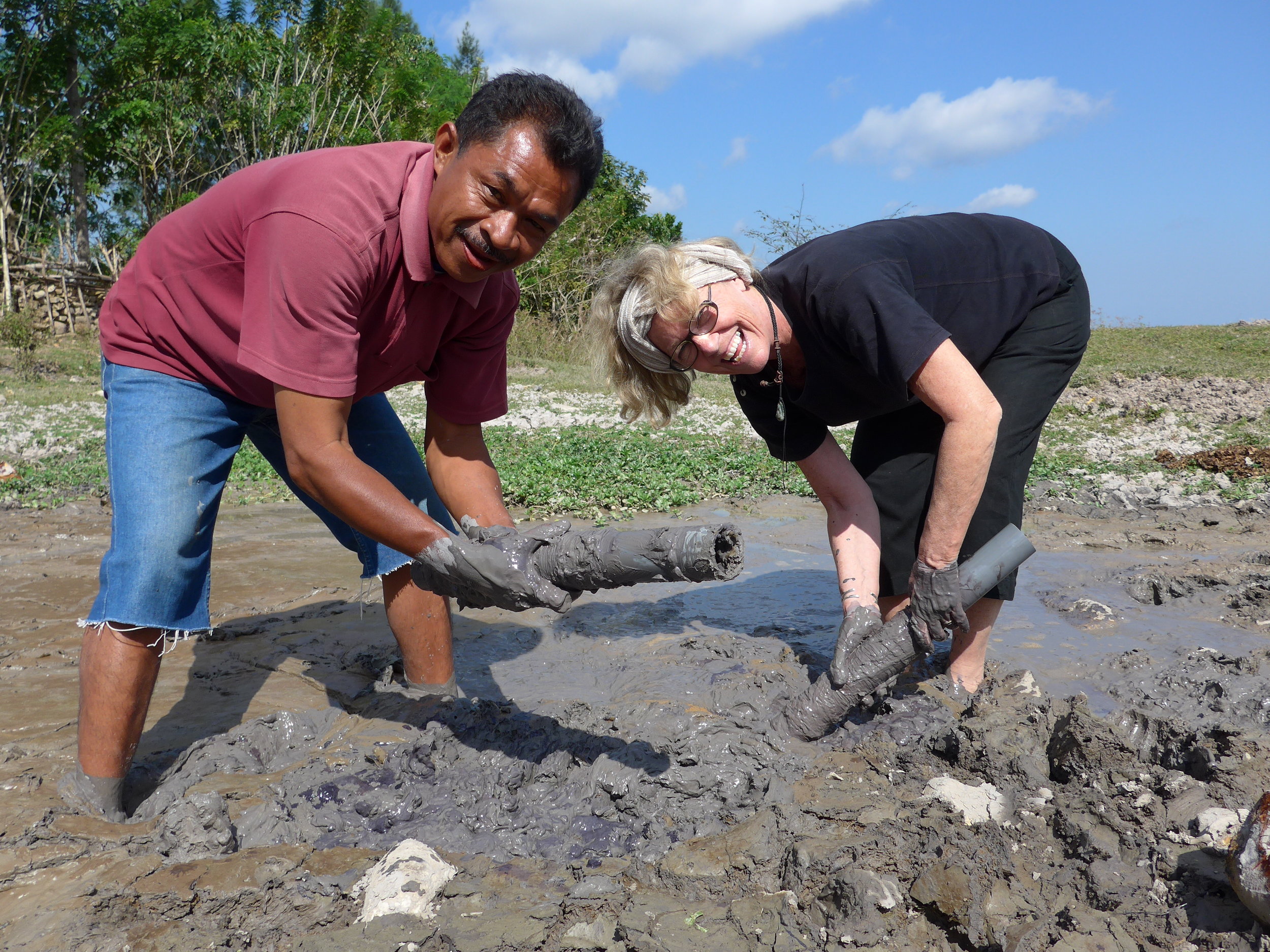Get to know: Mariko Sugimoto, ceramic artist (and Slanker)
/Mariko Sugimoto is a Japanese ceramic artist based in Ubud. She was born and raised in Tokyo until she was 12 years old before moving to Nagoya with her family. To date, she has two ceramic studios. One in Ubud (Setia Ceramics) and one in Nagoya where young people learn how to make ceramics.
Elami and Co. worked together with Ibu Mariko last year for our Elami Box series.
When did you start making ceramics?
When I finished my college, I became a kindergarten teacher for 4 years in Nagoya. Then after that, I began my ceramic journey.
It started from our program back in school. In Japan, we have kyushoku, it’s when all the students and teachers make and have lunch together at school. Usually, it comes with a glass of milk. Before graduation, the school organized this event where the teachers made ceramics for their students as a gift. So we made mugs for the children to drink milk. Kyushoku is also an event where the school invites the parents to watch what kind of activity we hold for their children. Parents take a lot of photos of this event usually.
What was your background in college?
I was in college for kindergarten teacher education.
So did you always want to be a kindergarten teacher?
Not really, hahaha, back then I only thought that it’s better for me to earn the certification. It would be easier for me to apply for a job. I got the kindergarten teacher license and a cooking license. These two license exams were easy for me. It’s a normal thing in Japan. People earn specific licenses and work based on the needed expertise. For example, men choose to take mechanics licenses for vehicles. Besides being easy to get a job, the salary is also higher because we have the licenses. Because of that, many of the kindergarten teachers don’t just teach. Some of them are also professional pianists or musicians.
Back to the story of how I found ceramics, I decided to continue learning how to make ceramics. I lived in one of the ceramic maestro’s studios in Seto. It was 20 minutes from Nagoya by car. Nagoya is a city famous for ceramics. There are a lot of ceramic artists, handcrafts, and studios. Seto is also a famous place where many people from other countries come to learn how to make ceramics. Including 8 other people who lived in the studio before me. They came from France, Australia, Germany… They all keep coming from abroad… Mostly learning how to make ceramics in a traditional way, such as Japanese tea ceremony ceramics.
Did you still teach in kindergarten when you started your ceramics practice?
No, I quit to make ceramics. I was just like a tukang (craftsman) who helps the wood artisans in Jalan Raya Mas. We had our small rooms like a kos-kosan (boarding house) and we got free meals but no salary. I lived in the maestro’s studio for 5 years. It’s not long compared to one ceramicist who stayed there for 20 years.
What is your maestro’s name? And why did you choose him if there are a lot of maestros in Seto and Nagoya?
Kato… Kato Motoo… He has already passed away. Well, no reason, in particular, just a coincidence.
Why do you have many ceramic designs for sake and arak?
I receive orders from restaurants and shops. So the ceramic designs for sake and arak are one of the popular orders. They might order here because I have the Japanese style they require. It brings back memories of when I arrived in Bali. I wanted to open a ceramic studio but I didn’t know what the customers needed and wanted. Eventually, I found out that they like the Japanese style. In Japan, there are enough ceramic artists to make Japanese-style ceramic for sure but here there aren’t many.
What is your favorite thing to make from clay?
Hmmm… the thing I like the most is interior furniture. Lamp bodies, vases, candlesticks, and other small pieces we usually like to keep in the room.
How did you come to Ubud and how long ago?
I was a tourist, traveling to Bali around 1998 or 2000, I don’t remember. One of my friends has a shop in Bali and I came along with her, so did my friends. I came to Bali once a year. Eventually, I came to Ubud and my respect towards the people has only grown since then. I feel at peace, so I started to follow rituals like going to the temple and joining the ceremonies.
At that time, I worked in Japan and Bali, staying in each place for 6 months. Until I found it difficult to manage my production timeline. So I needed to decide, which one of the countries should I live in. At first, I decided to live in Japan. I was too afraid to live in Bali alone. Yes, I love the culture, but I was not familiar enough with it. Back in Japan, I had my network and I had contracts with some of the art galleries already. Everything was easier and manageable. Also, professional ceramicists have their career paths in Japan. In Indonesia, I need to compete with the market. Also, every time I mentioned that I am a ceramicist here, many people would think I make ceramic tiles.
However, when I addressed this, my uncle, who was 98 years old at that time, was the one who encouraged me to move to Bali. He was the oldest of 8 children from my mom’s line and I was close to him. My uncle was an ambitious type of person. The only ambition he didn’t achieve was living abroad. So, I guess that’s the reason behind his strong suggestion. He said that since I have my ceramic studio already in Bali, I should start to take care of it. I thought, well my ceramic studio was actually a prep studio for my artworks in Japan. Oftentimes I would buy material from Bali such as traditional baskets, woven fabric, and metal to combine them with my ceramic artworks. Some of the commissioned works came from this ‘assimilation’ as well.
Long story short, I listened to my uncle and I gave myself a chance to move to Bali for good. This then brought me a big surprise, because not long after I moved to Bali, there was a huge tsunami in Tohoku (2011). The economy in Japan collapsed and a lot of art galleries were closed. I felt lucky but also devastated because I saw how distressing it was when I went to Japan once it was safe again. I came back to Bali and continued what I started. It’s difficult, yes, but I have made a strong commitment and work hard. So here I am, 10 years later.
Will you move back to Japan someday?
I guess when I’m really old there might be a chance.
Who are your favorite Indonesian and Japanese artists?
Nara Yoshitomo! He is a painter.
And Kuncir too, I respect his work… oh and Rio Simatupang.
I like them.
Do you have a favorite place that makes you miss being in Japan?
Hotspring! Onsen! There are so many onsens in the Japanese villages. The one that I like is in Takayama, a few hours from Nagoya. There are a lot of heritage buildings and traditional food there. The village view is literally as beautiful as anime in real life. We keep our cities, towns, and villages from over-building. The Japanese government makes strict policies to regulate this.
What is the most important event in your life?
Finding a ceramic practice… That was the best moment of my life. I have been working 20 years working and never ever have I been bored. That is my happiness.
We know you’re a huge fan of the music scene in Java and Bali, who is your favorite musician and why?
Slank. We became good friends and those friendships became my reason to stay in Indonesia, in Bali.
I used to watch their performances on TV and liked their music a lot. I collected their cassettes and CDs, listened to them even when I was in Japan, and learned what they were talking about in the lyrics. There wasn’t info about them in Japan, or online of course, so I thought I would register my contact in their fanbase to have their concert info. One time I need to go to Jakarta to manage my visa. I stayed at my friend’s place in Kemang, which is close to Gang Potlot, where the Slank fanbase is based.
I just went there and my idea was it’s just a registration office. I remember I paid Rp5.000,- for registration. Later I learned that the Slank members and Bunda Iffet were living there as well [Bunda Iffet is Bimbim’s mother, one of the Slank founders and members. She is also the band manager]. When I was there, hundreds of Slankers were hanging out, playing music and singing together. So I joined in. One of them asked me whether I could sing Slank’s songs. I was so proud. They were surprised, maybe thinking who is this Japanese girl singing a Slank song. That, the registration officer came to me saying Bunda Iffet wanted to see me. I was shy at first but then I met her and the band members. They are a lovely family, humble people, and I felt welcomed straight away. She invited me to join their backstage team along with the band to go to Sukabumi, West Java. So I stayed with them for two days before their concert. That was a wow moment for me. I went there just as a fan wanting to know their upcoming concert schedule, wondering if they would have a concert in Bali.
With a backstage pass, I learned so many things with them. They have a solid backstage team. I never saw a crew’s stamina like theirs. Also, the team was built from the people who like to listen to Slank as well. When I was in university, I took an arubaito (part-time job) at a music concert event company. They managed concerts from international musicians such as Eric Clapton, Bob Dylan, Led Zeppelin, and David Bowie. I worked there so I could watch the music concerts for free. I love rock music and I gained a lot of experience from being a part of that huge team. There, we were divided into certain roles and divisions. But I saw what this solid team did for Slank. They worked differently. It looks like no one was the supervisor. I have huge respect for how they have trust in each other.
I have good relationships with the Slank members and Bunda until now. Sometimes they order ceramics for the band merchandise and I stay at their place whenever I go to Jakarta. The Slank members are rebellious, but only for a good cause and they all are kind-hearted. Two years ago, if I’m not mistaken, I went to Hongkong and Sumba for their concerts. They are my family in Indonesia.
What is the best advice you have ever had?
I have taken this away from Osamu Tezuka’s works:
“If you see this world we live in is beautiful, then your world will be.”
I honor his mangas. For me, manga teaches me more rather than reading a complex book. Tezuka is a manga artist, one of the manga pioneers originally from Japan. He likes to write philosophically and historically. He wrote Atom (Astro Boy), one of my favorite mangas.
What is your typical morning routine as an artist?
Wake up, coffee, work, sleep that’s it.
Do you have a favorite anime and favorite show from Indonesia?
Akira… and Bajaj Bajuri!
[Akira is a Japanese cyberpunk manga series written and illustrated by Katsuhiro Otomo; Bajaj Bajuri is an Indonesian sitcom that aired on Trans TV from 2002 - 2007, it told the story of a humble Betawi family in Kampung Betawi in Jakarta]






































































